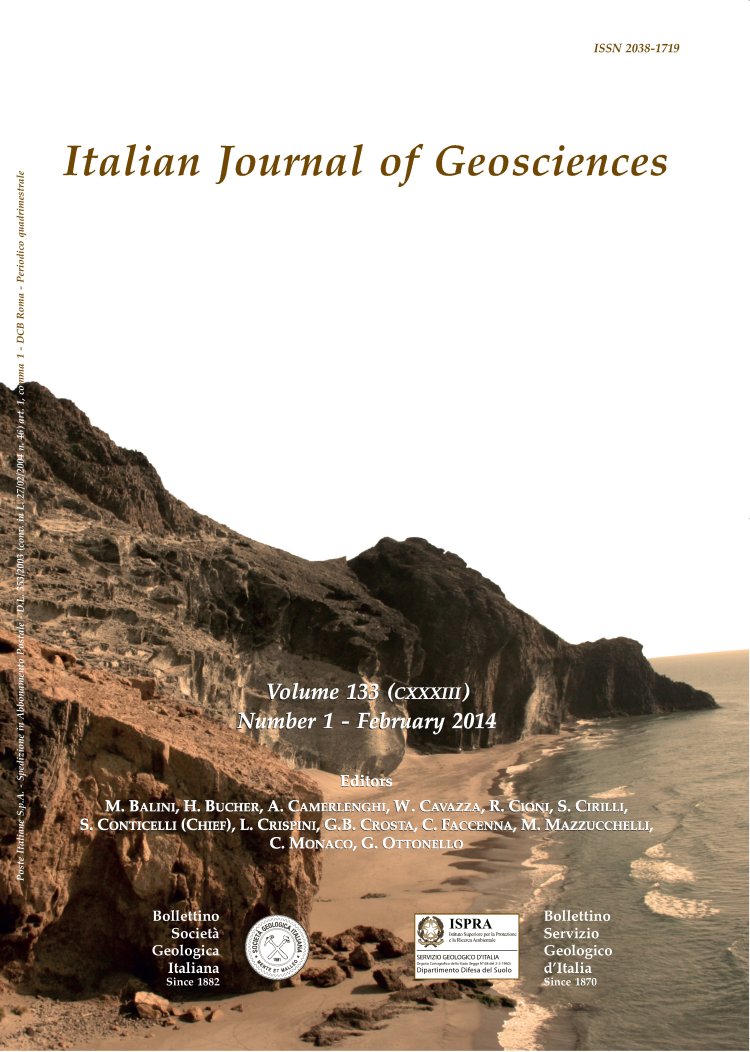
Carbonate intercalations in a terrigenous foredeep: late Miocene examples from the Simbruini Mts. and the Salto Valley (Central Apennines - Italy)
Simone Fabbi(*), Fabrizio Galluzzo(**), Rita Maria Pichezzi(**) & Massimo Santantonio(*)
(*) Dipartimento di Scienze della Terra, Università "Sapienza"
di Roma, Piazzale A. Moro, 5 - 00185 Roma. Corresponding author:
simone.fabbi@uniroma1.it
(**) ISPRA-Servizio Geologico d'Italia.
Volume: 133 (2014) f.1
Pages: 85-100
Abstract
Resedimented calcarenites and hybrid arenites are commonly found interbedded with various Upper Miocene terrigenous units (hemipelagic marls, "brecce della Renga fm.", and siliciclastic turbidites) across the Simbruini Mts. and neighbouring areas of Central Apennines. Their distribution provides evidence for a complex, and rapidly evolving, paleogeography across a region that was experiencing the transition from foreland to accretionary wedge conditions during the Tortonian and Messinian. The bio-sedimentological features of the calcarenites indicate deposition through gravity flows (turbidity currents) sourced by areas of active benthic, heterozoan-type carbonate
production, locally lying at photic depth. Thin-section analysis of >130 samples revealed that the resedimented levels are mainly composed by bioclastic calcarenites, with fragments of bivalves, echinoids, bryozoans, balanids, benthic foraminifera, anellids and red algae, along with subordinate planktonic foraminifera. The calcareous turbidites in the hemipelagic marls (Unità argillosomarnosa) are characterized by the presence of Heterostegina sp., and their main source area was probably lying east, on the undeformed foreland. In contrast, evidence from field mapping, their common association with Cretaceous and Miocene carbonate lithoclasts, and the age of the encasing units, all suggest that the calcarenites in the "brecce della Renga fm." and in the siliciclastic turbidites ("complesso torbiditico altomiocenico laziale-abruzzese") could most likely have a different source.
The presence of a carbonate ridge, corresponding today to the NW sector of the Simbruini range, bordered by normal faults exposing the Cretaceous substrate, is proven proven by mappable paleo - escarpment tracts onlapped by clastic and hemipelagic deposits.
This ridge could have fed surrounding deeper areas with a mixture of lithoclasts and loose bioclastic material, produced through erosion of exposed bedrock coupled with export of sediment that was being produced topping and fringing the footwall blocks and their marginal downsteps. Carbonate production was apparently able to survive for a limited time in small productive areas until the early Messinian, shedding sediment into the siliciclastic foredeep
Keywords
Get Full Text